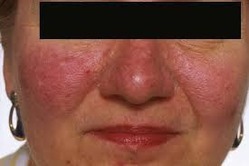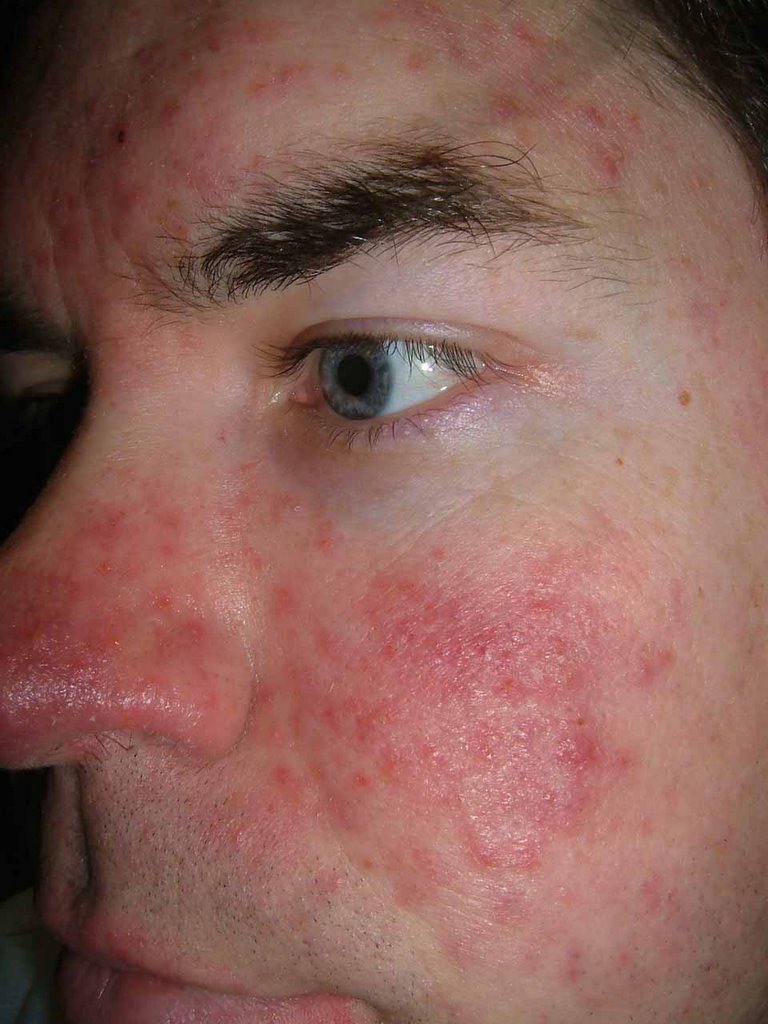Makindo Medical Notes"One small step for man, one large step for Makindo" |
|
|---|---|
| Download all this content in the Apps now Android App and Apple iPhone/Pad App | |
| MEDICAL DISCLAIMER: The contents are under continuing development and improvements and despite all efforts may contain errors of omission or fact. This is not to be used for the assessment, diagnosis, or management of patients. It should not be regarded as medical advice by healthcare workers or laypeople. It is for educational purposes only. Please adhere to your local protocols. Use the BNF for drug information. If you are unwell please seek urgent healthcare advice. If you do not accept this then please do not use the website. Makindo Ltd. |
Acne Rosacea
-
| About | Anaesthetics and Critical Care | Anatomy | Biochemistry | Cardiology | Clinical Cases | CompSci | Crib | Dermatology | Differentials | Drugs | ENT | Electrocardiogram | Embryology | Emergency Medicine | Endocrinology | Ethics | Foundation Doctors | Gastroenterology | General Information | General Practice | Genetics | Geriatric Medicine | Guidelines | Haematology | Hepatology | Immunology | Infectious Diseases | Infographic | Investigations | Lists | Microbiology | Miscellaneous | Nephrology | Neuroanatomy | Neurology | Nutrition | OSCE | Obstetrics Gynaecology | Oncology | Ophthalmology | Oral Medicine and Dentistry | Paediatrics | Palliative | Pathology | Pharmacology | Physiology | Procedures | Psychiatry | Radiology | Respiratory | Resuscitation | Rheumatology | Statistics and Research | Stroke | Surgery | Toxicology | Trauma and Orthopaedics | Twitter | Urology
Related Subjects: | Nikolsky's sign | Koebner phenomenon | Erythema Multiforme | Pyoderma gangrenosum | Erythema Nodosum | Dermatitis Herpetiformis | Lichen Planus | Acanthosis Nigricans | Acne Rosacea | Acne Vulgaris | Alopecia | Vitiligo | Urticaria | Basal Cell Carcinoma | Malignant Melanoma | Squamous Cell Carcinoma | Mycosis Fungoides (Sezary Syndrome) | Xeroderma pigmentosum | Bullous Pemphigoid | Pemphigus Vulgaris | Seborrheic Dermatitis | Pityriasis/Tinea versicolor infections | Pityriasis rosea | Scabies | Dermatomyositis | Toxic Epidermal Necrolysis | Stevens-Johnson Syndrome | Atopic Eczema/Atopic Dermatitis | Psoriasis
🌹 Acne Rosacea is a chronic inflammatory skin condition of the face. It is not infectious, but it may be worsened by topical steroids and systemic drugs such as Amiodarone. 💡 Recognising and avoiding triggers is central to management.
📖 About Acne Rosacea
- 🔥 Characterised by recurrent flushing, burning, and inflammation.
- 🧬 Perifollicular and perivascular inflammation; no microbial pathogen identified.
- ⚖️ Frequently misdiagnosed as acne vulgaris — important distinction as treatments differ.
🧪 Aetiology
- 🕷 Demodex folliculorum mites: implicated in pathogenesis via immune response.
- 💓 Vascular dysregulation plays a role in flushing and persistent erythema.
- 🌍 Environmental and genetic predisposition also contribute.
📊 Epidemiology
- 👩 Fair-skinned adults aged 40–60 most affected.
- 👨🦱 More severe in men, though women are more commonly affected.
- 🚩 Triggers: alcohol, spicy food, sunlight, temperature extremes, stress.
🩺 Clinical Presentation
- 🌡 Flushing and persistent redness (erythema) over the cheeks, chin, nose, and forehead.
- 🔴 Telangiectasia, papules, and pustules (but no comedones, unlike acne vulgaris).
- 🔥 Burning or stinging sensations may be present.
- 👁 Ocular involvement: blepharitis, conjunctivitis, keratitis → can progress to corneal scarring.
- 👃 Severe: rhinophyma (bulbous nose) due to sebaceous gland hypertrophy, more common in men.
- 🧠 Psychological impact is significant: anxiety, social withdrawal, depression.
🚩 Triggers
- 🍷 Alcohol and hot drinks
- 🌶 Spicy foods
- ☀️ Sunlight, 💨 wind, ❄️ temperature extremes
- 🏃 Exercise
- 😰 Stress
- 💊 Topical steroids
🔍 Physical Examination
- 🔴 Flushing and visible telangiectasia on the central face.
- 🧴 Papules/pustules may resemble acne but without comedones.
- 👃 In chronic cases: phymatous changes (rhinophyma).
- 👁 Ocular findings: lid margin inflammation, conjunctival injection.
🖼 Images


💊 Management
- 🧴 General care: Broad-spectrum SPF ≥30 daily, avoid irritant soaps, use gentle emollients.
- 🧪 Topical: Metronidazole or azelaic acid (response in ≥8 weeks). Brimonidine gel can reduce erythema.
- 💊 Oral antibiotics: Oxytetracycline 500 mg BD; doxycycline or lymecycline alternatives. Minocycline less favoured due to pigmentation risk.
- ⚠️ Refractory cases: Isotretinoin under specialist supervision.
- 💡 Procedures: Laser therapy (for telangiectasia/erythema), surgical/laser reshaping for rhinophyma.
👁 Ocular Rosacea
- Presents with blepharitis, conjunctivitis, gritty eyes, and lid inflammation.
- ❗ Untreated, may lead to keratitis and corneal scarring → sight-threatening.
- ➡️ Requires prompt ophthalmology referral.
🧾 Investigations
- ✅ Usually a clinical diagnosis.
- 🧪 Tests only if atypical features or to exclude differential diagnoses (e.g. lupus, acne vulgaris, seborrhoeic dermatitis).
📝 Exam Pearls
- 🚫 No comedones → not acne vulgaris.
- 👃 Rhinophyma → severe, late complication, more common in men.
- 👁 Ocular involvement → risk of vision loss, needs urgent ophthalmology input.